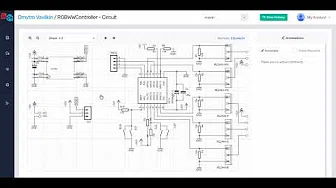Files
Last update 3 years 10 months
by eddyluursema
| FilesArduinoCourseArduinoCoursePart210_BrightnessWithoutDelay | |
|---|---|
| .. | |
| 10_BrightnessWithoutDelay.ino | |
| SignalControl.ino |
SignalControl.inoconst int SIGNALPIN = 13; const int PWMTIME = 20; // time in msec for one PWM cycle. const int PWMINCREASE = 1; // each PWM cycle is divided into steps of PWMINCREASE msec int pwmCycle; // each PWM cycle this starts with 1 and increases each PWMINCREASE msec up to PWMTIME unsigned long previousMillis; // will store last time PWM cycle was updated int ledBrightness; // will store brightness as the PWM width value between 0 and PWMTIME void SignalControl_Init() { // initialize digital pin 13 as an output. pinMode(SIGNALPIN, OUTPUT); pwmCycle = 1; ledBrightness = 2; // lowest brightness for this experiment } void SignalControl_Blink() { unsigned long currentMillis = millis(); // current time if (currentMillis - previousMillis >= PWMINCREASE) { // PWMINCREASE msec have passed since last time previousMillis = currentMillis; // wait for next moment pwmCycle = pwmCycle + PWMINCREASE; // next PWMINCREASE msec within one PWM cycle if (pwmCycle > PWMTIME) { // if one PWM cycle is completed, repeat by starting at 1 pwmCycle = 1; }; int ledState; if (ledBrightness >= pwmCycle) { // switch LED on or off during one cycle at the moment the setting of the brightness is reached ledState = HIGH; // HIGH means set LED on } else { ledState = LOW; // LOW means set LED off } digitalWrite(SIGNALPIN, ledState); //set output according to ledState } }








